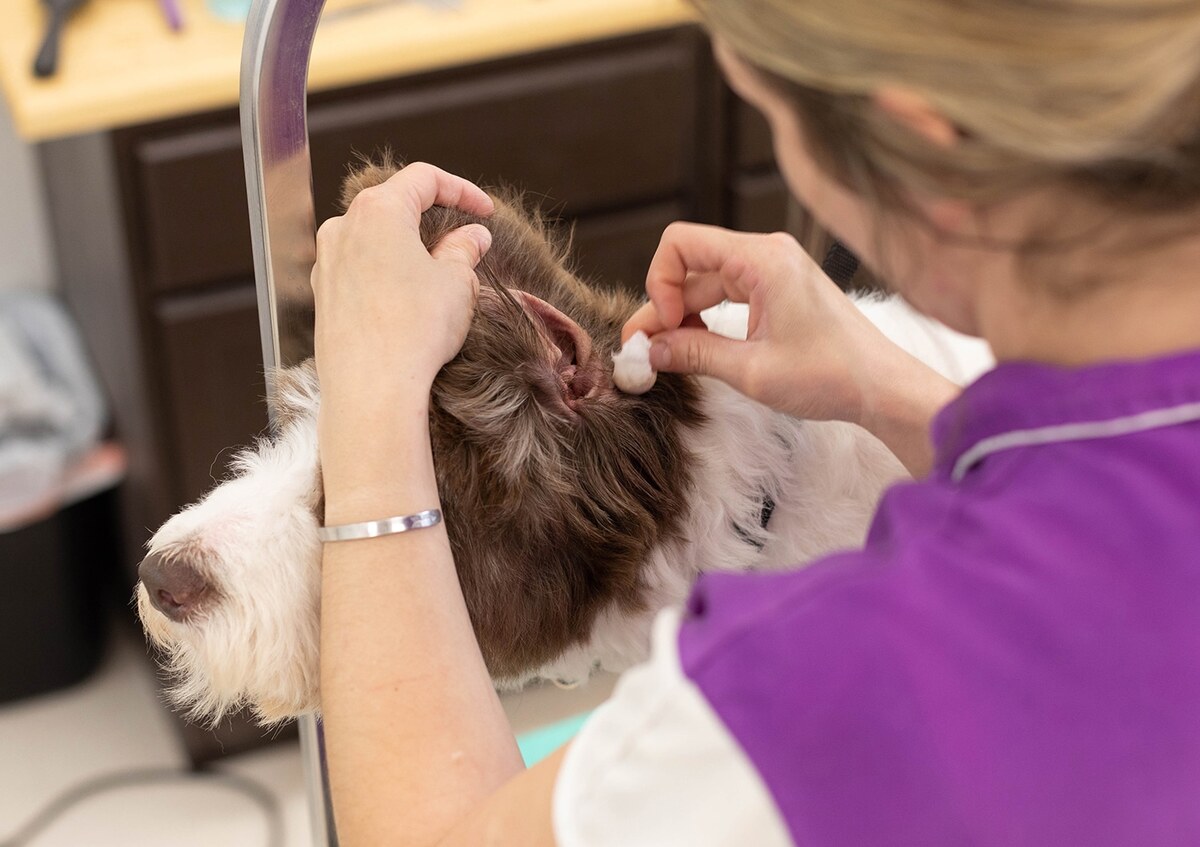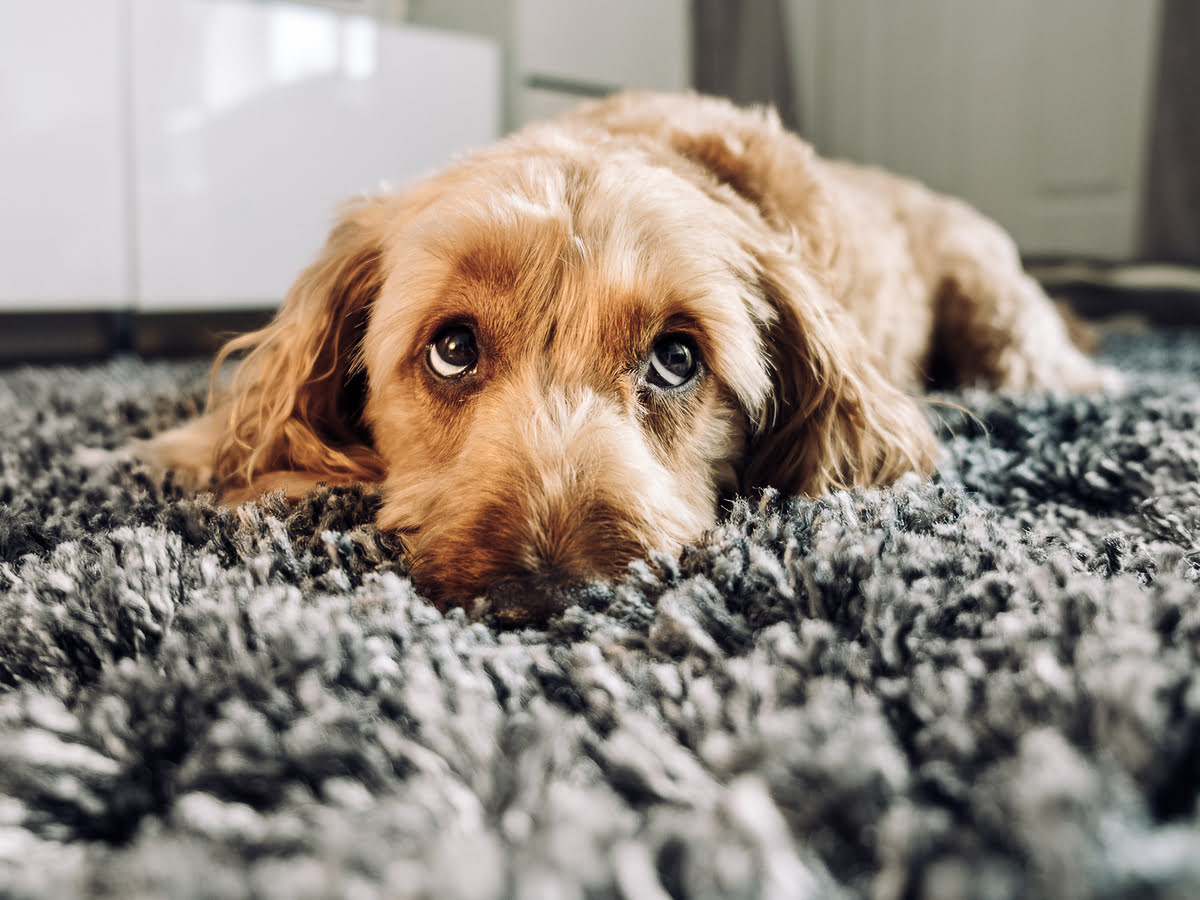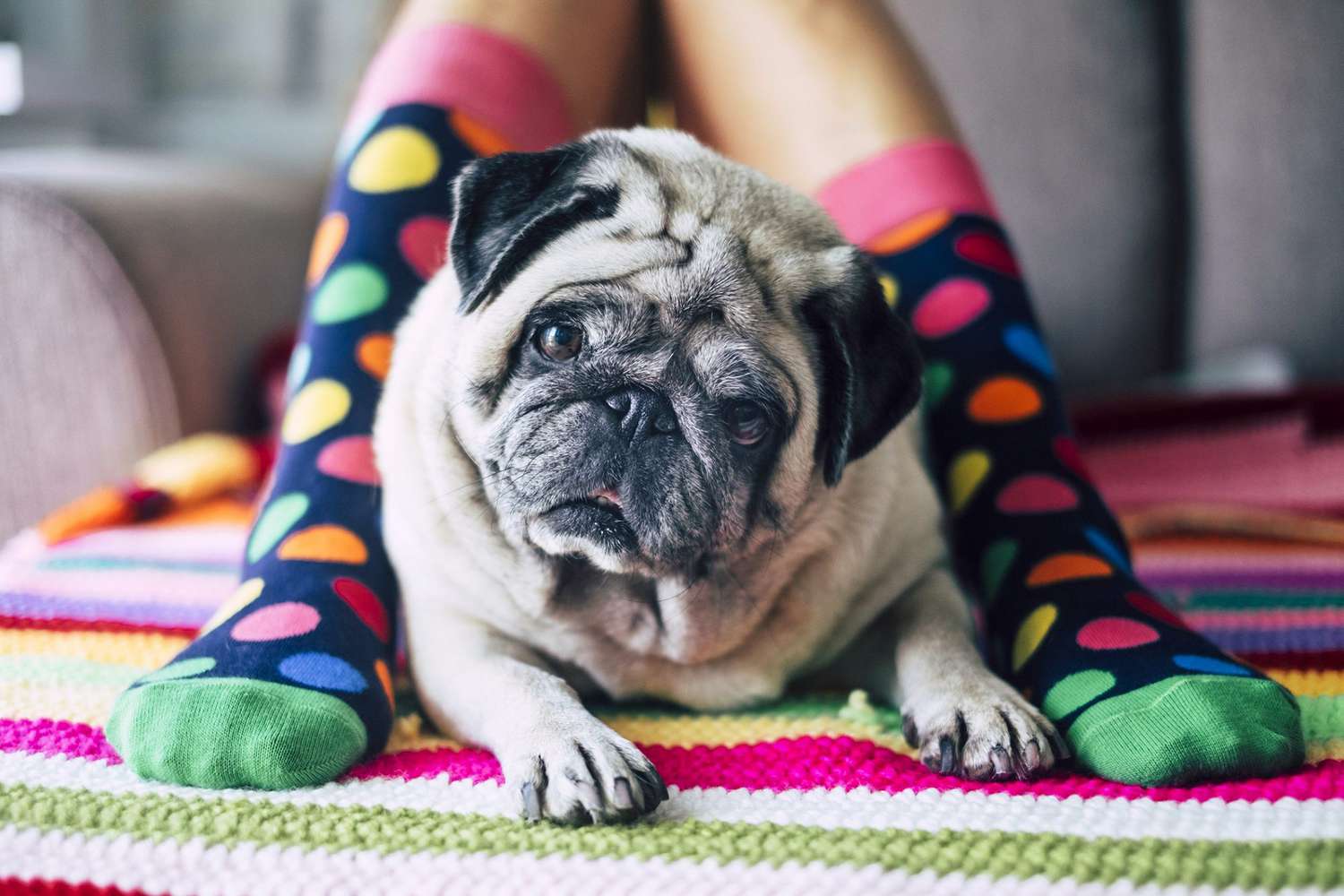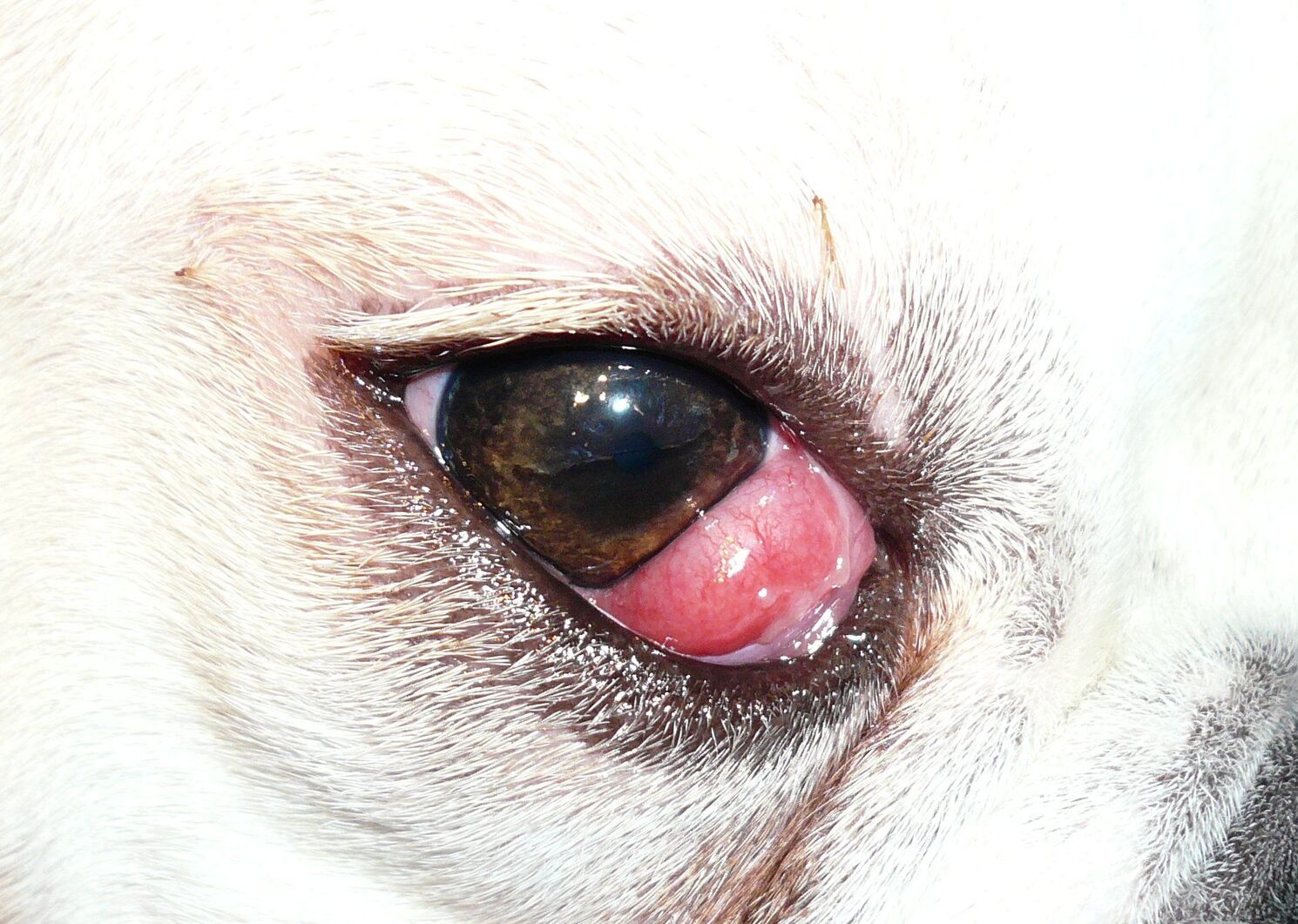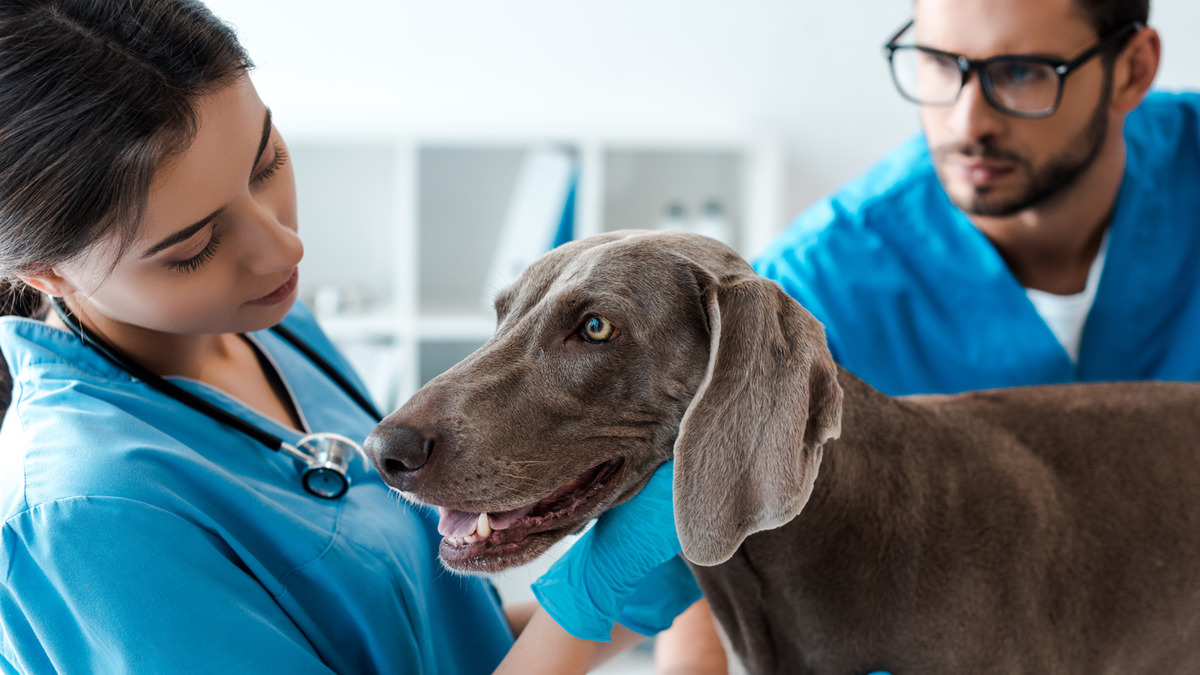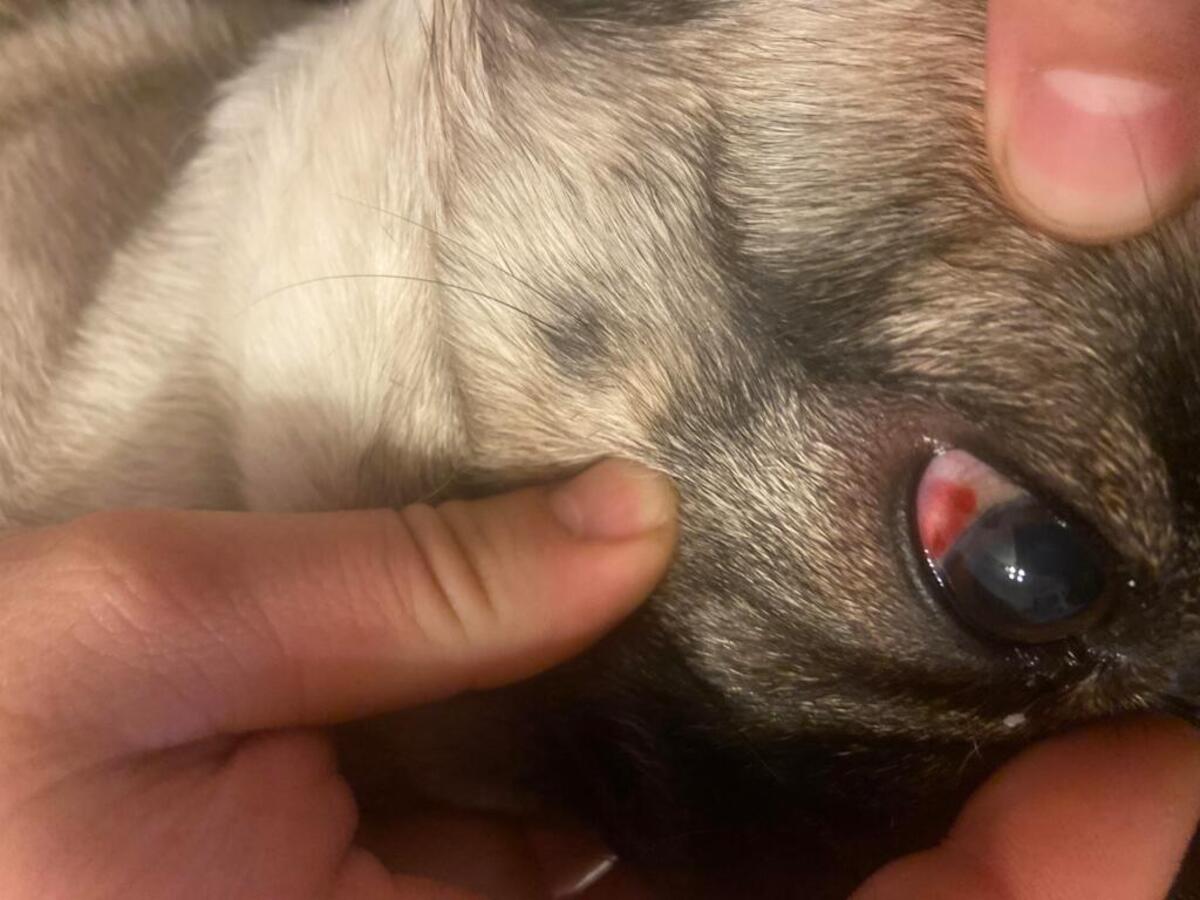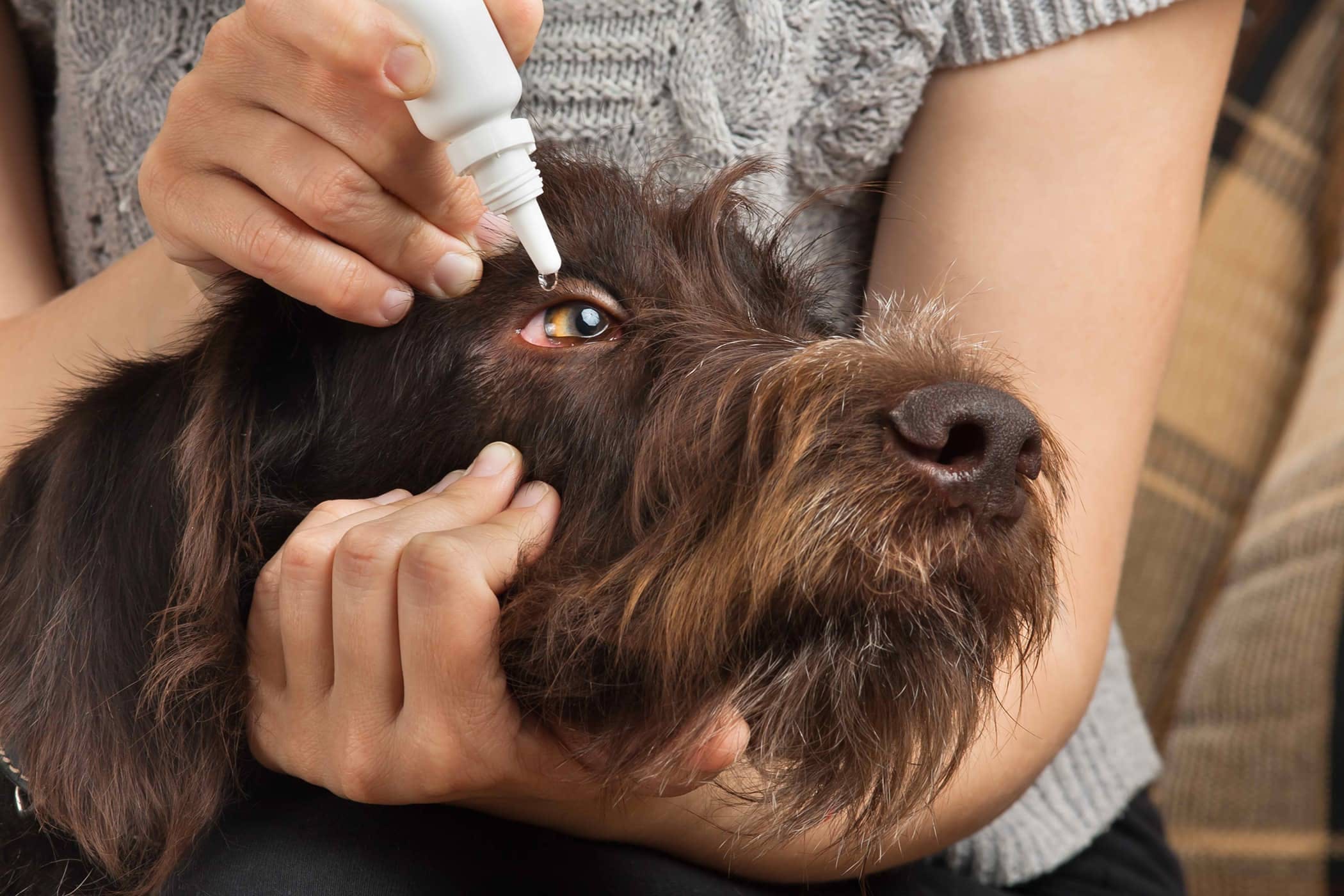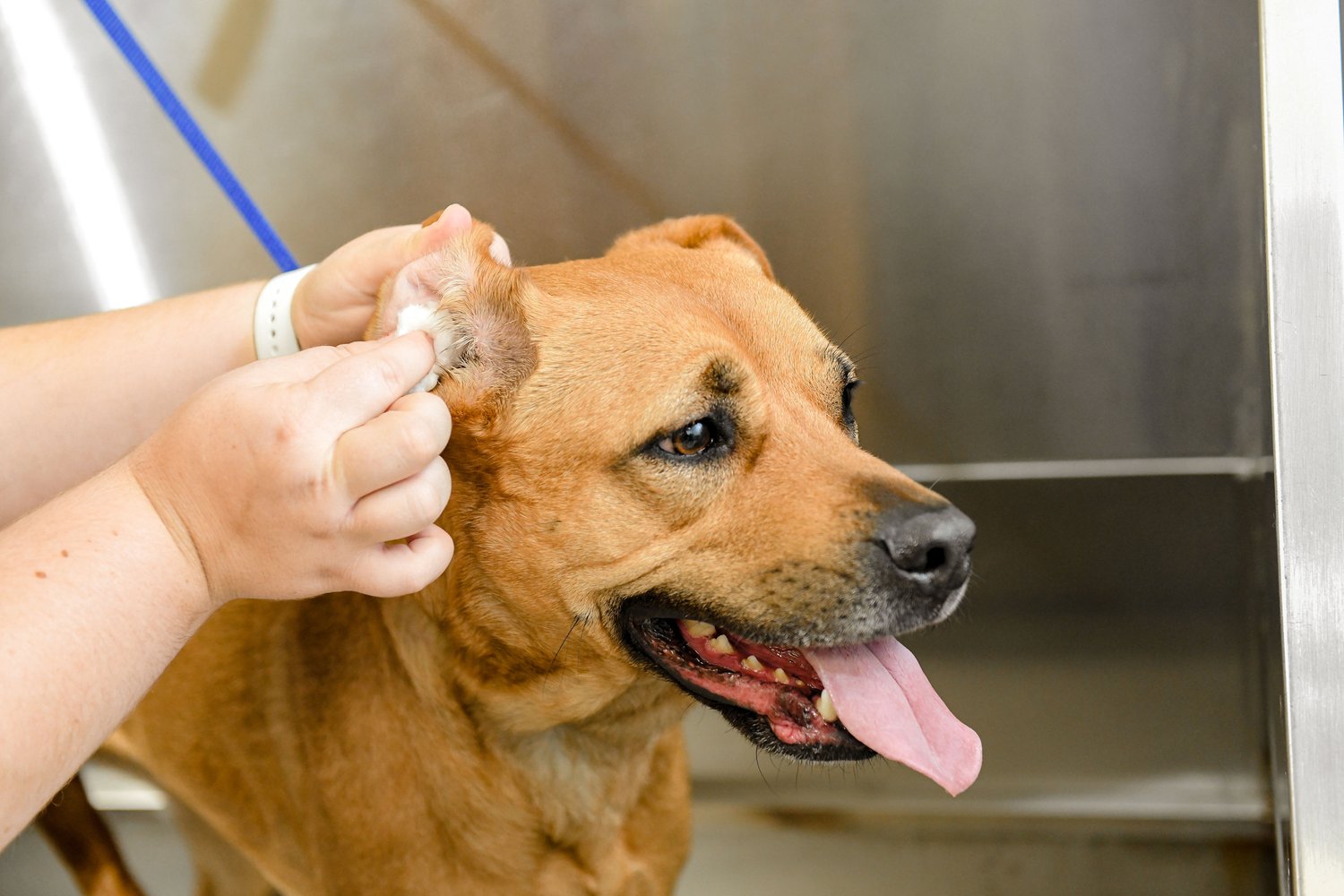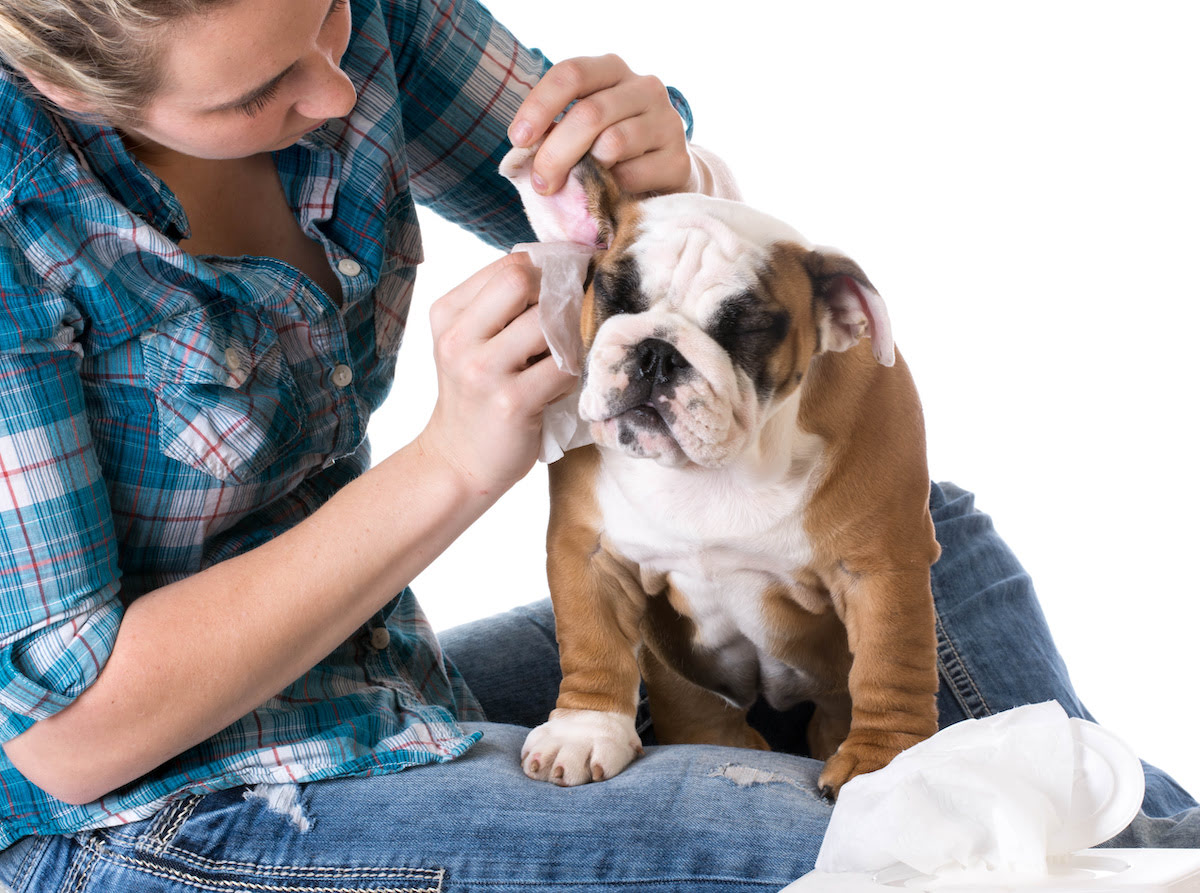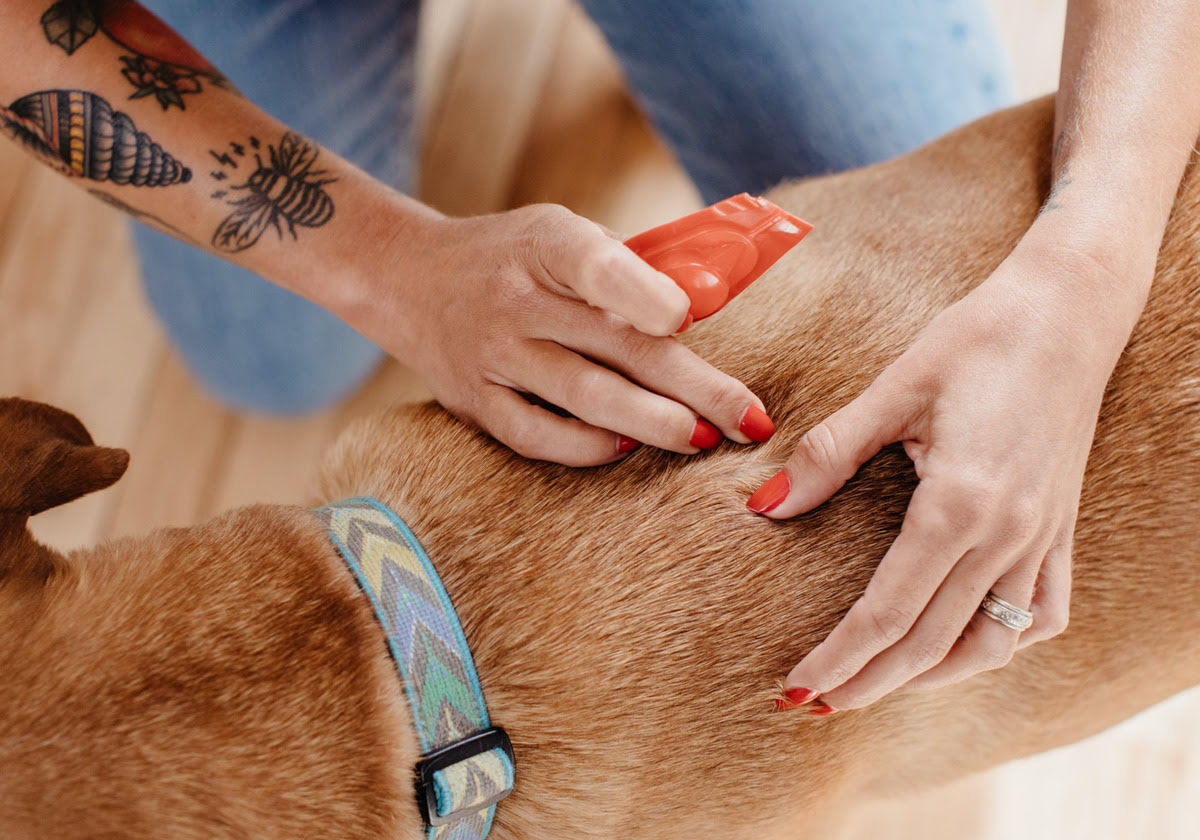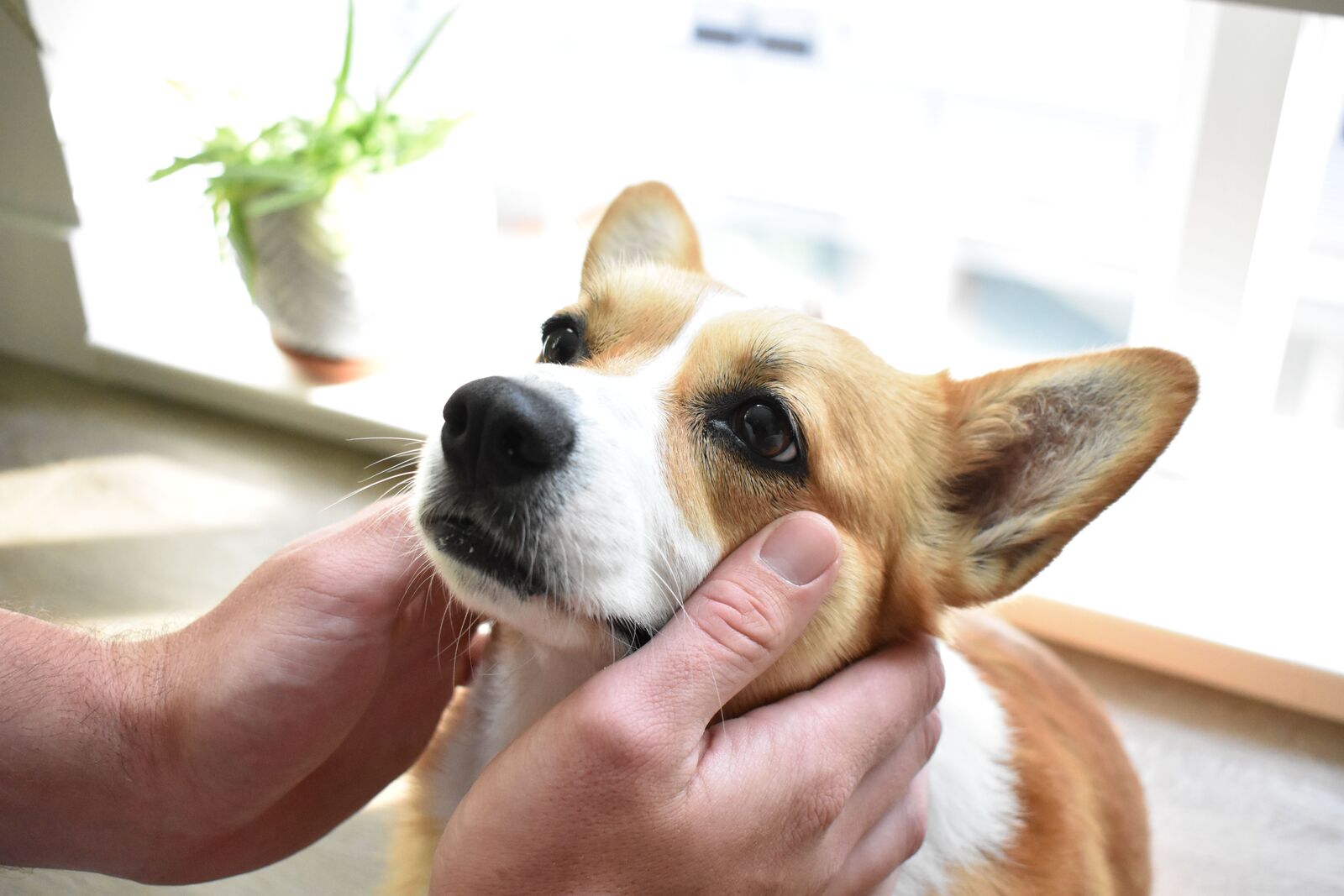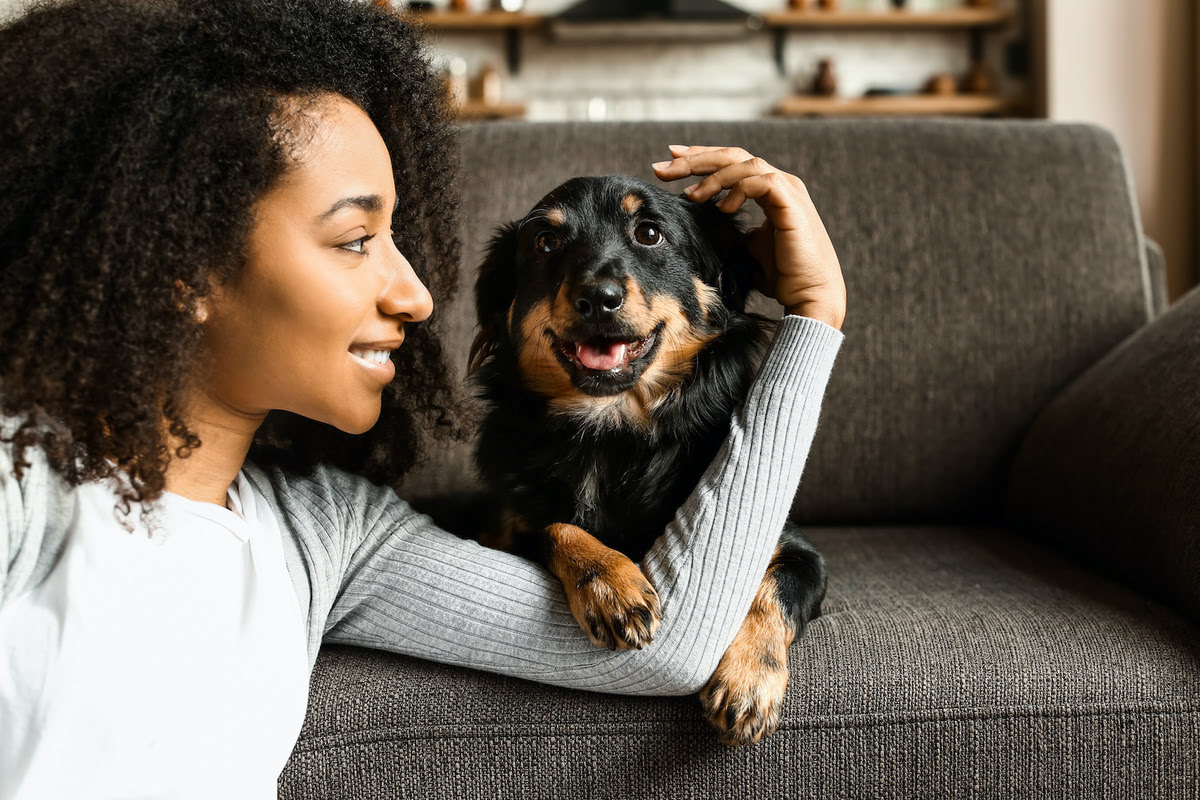Home>Health & Wellness>Common Health Issues>Eye and Ear Health>How To Treat A Yeast Infection Near A Dog’s Eye


Eye and Ear Health
How To Treat A Yeast Infection Near A Dog’s Eye
Published: February 11, 2024
Learn effective ways to treat a yeast infection near your dog's eye for optimal eye and ear health. Discover expert tips and remedies now!
(Many of the links in this article redirect to a specific reviewed product. Your purchase of these products through affiliate links helps to generate commission for Pawsomeoldies.com, at no extra cost. Learn more)
Table of Contents
Introduction
Yeast infections near a dog's eye can be a cause of concern for pet owners. These infections, caused by the overgrowth of yeast, can lead to discomfort and irritation for our furry friends. As responsible pet owners, it's crucial to understand the signs, treatment options, and preventive measures for addressing yeast infections near a dog's eye.
In this comprehensive guide, we will delve into the world of yeast infections in dogs, focusing specifically on those occurring near the eye area. By gaining a deeper understanding of this common ailment, you will be better equipped to identify, treat, and prevent yeast infections, ensuring the optimal health and well-being of your beloved canine companion.
Let's embark on this informative journey to unravel the mysteries of yeast infections near a dog's eye, empowering you with the knowledge and tools to provide the best care for your furry friend.
Read more: What Causes A Yeast Ear Infection In Dogs
Understanding Yeast Infections in Dogs
Yeast infections in dogs, scientifically known as Malassezia dermatitis, are a common occurrence among our canine companions. These infections are primarily caused by the overgrowth of yeast, specifically the Malassezia pachydermatis species, which naturally resides on the skin and in the ears of dogs. Under normal circumstances, the presence of this yeast is balanced by the dog's immune system and other microorganisms on the skin. However, certain factors can disrupt this equilibrium, leading to an overgrowth of yeast and subsequent infection.
Several factors can contribute to the development of yeast infections in dogs. These include underlying skin conditions such as allergies, hormonal imbalances, excessive skin folds, and moisture accumulation. Additionally, poor grooming habits, a compromised immune system, and certain medications can also predispose dogs to yeast infections.
Yeast infections in dogs manifest through a range of symptoms, including itching, redness, and inflammation of the affected area. Dogs may exhibit discomfort, frequently paw at their eyes, and display a noticeable discharge. The skin around the eye may appear greasy or have a foul odor, indicating the presence of yeast.
It's important to note that yeast infections in dogs, particularly near the eye area, can be challenging to manage without proper understanding and intervention. Therefore, being able to recognize the signs and symptoms of yeast infections is crucial for timely and effective management.
By comprehending the underlying causes and clinical manifestations of yeast infections in dogs, pet owners can take proactive measures to address and prevent these common ailments, ensuring the well-being and comfort of their beloved pets.
Identifying a Yeast Infection Near a Dog's Eye
Identifying a yeast infection near a dog's eye requires keen observation and an understanding of the telltale signs associated with this condition. The area around a dog's eye is particularly sensitive, making it crucial to promptly recognize any indications of a potential yeast infection. Here are the key signs to look out for:
-
Redness and Irritation: One of the primary indicators of a yeast infection near a dog's eye is redness and irritation in the surrounding skin. This may appear as a reddish hue around the eye, accompanied by visible discomfort or itching exhibited by the dog.
-
Excessive Tearing: Dogs with a yeast infection near the eye may experience increased tearing or ocular discharge. This discharge can range from clear to slightly discolored and may be accompanied by a distinct odor.
-
Scratching or Pawing at the Eye: Due to the discomfort caused by the yeast infection, dogs may frequently scratch or paw at the affected eye. This behavior is a clear indication of irritation and should prompt further examination.
-
Greasy Skin: The skin around the eye affected by a yeast infection may appear greasy or oily. This is often accompanied by a distinct, unpleasant odor emanating from the affected area.
-
Inflammation and Swelling: In more severe cases, inflammation and swelling may be noticeable around the eye. This can cause the affected area to appear puffy and tender to the touch.
-
Persistent Discomfort: Dogs with a yeast infection near the eye may exhibit signs of persistent discomfort, such as rubbing their face against furniture or other surfaces in an attempt to alleviate the irritation.
By being attentive to these signs, pet owners can promptly identify a yeast infection near a dog's eye and take the necessary steps to address the condition effectively. Early recognition of these symptoms is crucial for initiating appropriate treatment and preventing the infection from progressing further.
Understanding these key indicators equips pet owners with the knowledge to provide timely care and seek veterinary assistance when needed, ensuring the optimal health and comfort of their canine companions.
Treating a Yeast Infection Near a Dog's Eye
Upon identifying a yeast infection near a dog's eye, prompt and effective treatment is essential to alleviate discomfort and prevent the infection from worsening. The following steps outline the comprehensive approach to treating a yeast infection near a dog's eye:
-
Gentle Cleansing: Begin by gently cleansing the affected area around the dog's eye with a veterinarian-recommended, gentle cleanser. It is crucial to use a product specifically formulated for use near the eye to avoid irritation and further discomfort. Carefully remove any discharge or debris, ensuring thorough yet gentle cleansing to maintain the delicate skin around the eye.
-
Topical Antifungal Treatment: Utilize a veterinarian-prescribed topical antifungal treatment to target the yeast infection directly. These treatments are designed to combat the overgrowth of yeast and alleviate the associated symptoms. Apply the prescribed medication as directed, ensuring that it is safely administered near the eye area to effectively combat the infection.
-
Preventative Measures: Address any underlying factors that may have contributed to the development of the yeast infection. This may involve implementing measures to reduce moisture accumulation around the eye, such as keeping the area dry and well-ventilated. Additionally, addressing any predisposing skin conditions or allergies can help prevent future occurrences of yeast infections near the eye.
-
Dietary Considerations: In some cases, dietary adjustments may be recommended to support the dog's overall skin health and immune function. Consult with a veterinarian to explore potential dietary modifications that can aid in managing and preventing yeast infections in the future.
-
Regular Monitoring and Follow-Up: After initiating treatment, closely monitor the dog's eye for any changes or signs of improvement. It is essential to adhere to the prescribed treatment regimen and schedule any recommended follow-up appointments with the veterinarian to ensure that the infection is effectively addressed.
-
Environmental Management: Implement environmental changes, if necessary, to create a conducive and hygienic living environment for the dog. This may involve regular cleaning of bedding, grooming tools, and living spaces to minimize the risk of recurrent yeast infections.
By following these comprehensive treatment measures, pet owners can effectively address yeast infections near a dog's eye, providing relief for their furry companions and minimizing the likelihood of recurrence. It is important to prioritize the well-being and comfort of the dog throughout the treatment process, seeking professional guidance and adhering to the prescribed treatment plan for optimal results.
Preventing Yeast Infections in Dogs
Preventing yeast infections in dogs involves a proactive approach aimed at addressing underlying factors that contribute to the overgrowth of yeast, particularly in sensitive areas such as the eye. By implementing preventive measures, pet owners can significantly reduce the risk of their canine companions developing yeast infections. Here are essential strategies to prevent yeast infections in dogs:
-
Regular Grooming: Maintaining a regular grooming routine is crucial for preventing yeast infections in dogs. Regular brushing and grooming help to remove dead skin cells, excess oils, and debris that can create an environment conducive to yeast overgrowth. Pay special attention to areas around the eyes, ensuring that they are kept clean and free from moisture.
-
Proper Ear Care: As yeast infections often originate in the ears and can spread to the surrounding areas, it is essential to prioritize proper ear care. Regularly inspect and clean your dog's ears using veterinarian-recommended ear cleaners to prevent the buildup of moisture and debris, which can contribute to yeast proliferation.
-
Dietary Management: A well-balanced and nutritious diet plays a significant role in supporting a dog's overall health, including their skin and immune function. Opt for high-quality dog food that is tailored to meet your dog's specific nutritional needs. Additionally, consider incorporating omega-3 fatty acids and other skin-supporting supplements into your dog's diet, as these can help maintain healthy skin and reduce the likelihood of yeast overgrowth.
-
Environmental Hygiene: Creating a clean and hygienic living environment for your dog is essential for preventing yeast infections. Regularly clean and disinfect your dog's living spaces, including bedding, crates, and grooming tools, to minimize the presence of yeast and other potential irritants.
-
Moisture Management: Moisture accumulation provides an ideal breeding ground for yeast. Take proactive measures to keep your dog's skin and fur dry, especially in areas prone to moisture buildup, such as skin folds and around the eyes. Thoroughly dry these areas after bathing or exposure to water to prevent yeast-friendly conditions.
-
Regular Veterinary Check-ups: Schedule regular veterinary check-ups to monitor your dog's overall health and address any underlying conditions that may predispose them to yeast infections. Your veterinarian can provide valuable guidance on preventive measures tailored to your dog's specific needs.
By incorporating these preventive strategies into your dog's care routine, you can significantly reduce the risk of yeast infections, including those occurring near the eye. Proactive and attentive care plays a pivotal role in safeguarding your dog's health and well-being, ensuring they can enjoy a comfortable and infection-free life.
Read more: How To Treat A Dental Infection In A Dog
When to See a Veterinarian
Recognizing the appropriate time to seek veterinary assistance is crucial for ensuring the optimal health and well-being of your dog, especially when dealing with a yeast infection near the eye. While proactive home care measures are valuable, certain circumstances warrant professional evaluation and guidance from a veterinarian. Here are the key indicators that signify the need to seek veterinary care for a dog's yeast infection near the eye:
Persistent or Worsening Symptoms
If despite diligent home care, the symptoms of the yeast infection persist or worsen, it is imperative to consult a veterinarian. Persistent redness, irritation, excessive tearing, or discomfort around the eye may indicate an underlying issue that requires professional assessment and intervention.
Unusual Discharge or Odor
Unusual discharge from the eye, particularly if it becomes discolored or emits a foul odor, warrants veterinary attention. These signs may indicate a more severe infection or secondary complications that necessitate expert evaluation and targeted treatment.
Changes in Behavior
Observing changes in your dog's behavior, such as increased agitation, reluctance to be touched around the eye, or signs of discomfort, should prompt a visit to the veterinarian. Behavioral changes can signal pain or discomfort that requires professional diagnosis and management.
Read more: What To Treat A Dog’s Ear Infection With
Recurrent Infections
If your dog experiences recurrent yeast infections near the eye, despite your best efforts to prevent them, it is essential to seek veterinary guidance. Recurrence may indicate underlying predisposing factors or unresolved issues that need to be addressed by a qualified veterinarian.
Overall Concerns
If you have any concerns about your dog's eye health or general well-being, it is always advisable to seek professional advice. Veterinarians possess the expertise to conduct thorough examinations, provide accurate diagnoses, and recommend tailored treatment plans to address your dog's specific needs effectively.
In summary, recognizing the appropriate time to involve a veterinarian in the care of your dog's yeast infection near the eye is pivotal for ensuring comprehensive and targeted management. By promptly seeking professional assistance when needed, you can provide your furry companion with the best possible care, ultimately promoting their comfort, health, and quality of life.
